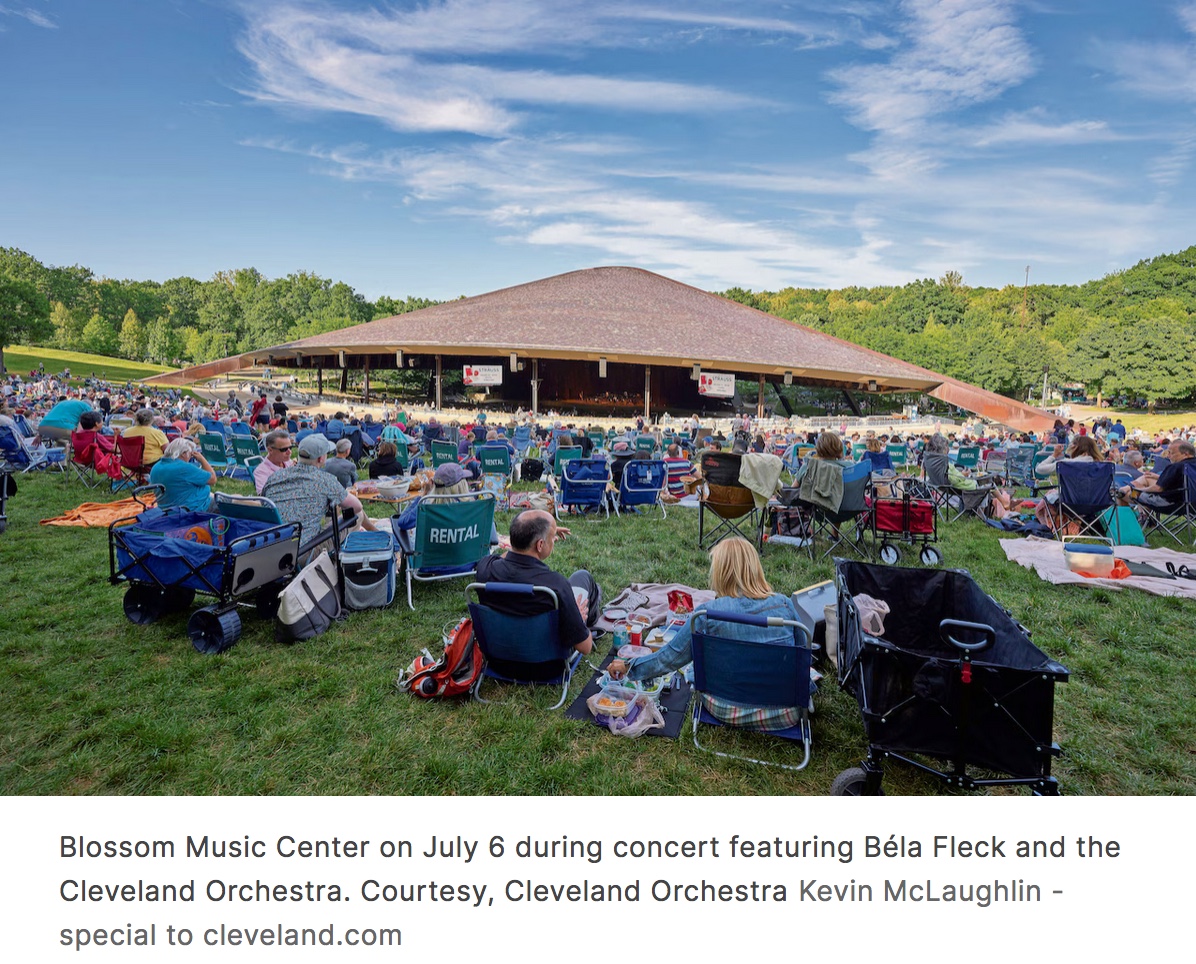by Kevin McLaughlin

CUYAHOGA FALLS, Ohio — It was a night of fireworks at The Cleveland Orchestra’s Blossom Music Center concert on Saturday, July 13, even if there were no after-concert skyrockets. The Orchestra’s principal trumpet Michael Sachs deserves primary credit, supplying as he did a whole summer’s worth of pyrotechnics in a single trumpet concerto.
Also impressive was the young Venezuelan conductor Domingo Hindoyan, who in his Cleveland Orchestra debut, showed both flair and craft.
In Alexander Borodin’s exotic Polovtsian Dances, extracted from his opera Prince Igor (1887), Hindoyan also displayed a mastery of combining orchestral and choral forces. His debonair, baton-less gestures seemed designed for the chorus, but they also summoned smoothness and blend from the Orchestra. The women’s voices were exquisite in their urgings to “Fly away on the wings of the wind” and to “Praise Genghis Khan.”
Woodwind solos by Jessica Sindell (flute), Daniel McKelway (clarinet), and Monica Fosnaugh (English horn), embarked on distinct sonic journeys but, as guided by Hindoyan, also amalgamated into an enhanced whole.
Armenian composer Alexander Arutiunian’s single movement Trumpet Concerto, which dates from 1950, expresses its concerto qualities over seven subdivisions. After an opening announcement that almost sounded improvised, a cheerful theme was made even more so by Sachs’ crisp articulation and precise rhythmic execution.
The central section features a sultry, sinuous melody for muted trumpet which sounds like out-of-tune Armenian blues. The trumpeter dashed through the final cadenza with its tricky double tonguing passages, and before you knew it, the piece was finished. A loud “bravo!” shouted from the audience said what we were all thinking.
Sergei Rachmaninoff’s Symphony no. 3 in A minor, a work written in 1935-36, some twenty years after the composer’s Second Symphony, is closer in conception to the composer’s Symphonic Dances (1940), not the least for its three-movement design.
Saturday’s performance was distinguished by Hindoyan’s wonderful alertness to the work’s many changes of mood and tempo. Throughout, the conductor took Rachmaninoff’s directions seriously — pointing up every ritard, acceleration, and rubato.
Surprising instrumental combinations yielded pleasurable results: xylophone with strings, flute with low clarinet, bass clarinet with English horn, and muted trumpets with open French horn. Hindoyan cast light on the composer’s idiosyncratic references to Gregorian chant (the “Dies Irae”), and to jazz. Even if you didn’t hear those connections, the result was pure joy.
Kevin McLaughlin recently retired as librarian at the Cleveland Institute of Music. A freelance writer and editor, his weekly podcast on early jazz, “At the Jazz Band Ball,” may be found on a variety of podcast platforms.
Published on ClevelandClassical.com July 17, 2024. Corrected references to soloists July 19.
Click here for a printable copy of this article
Return to the Front Page.



